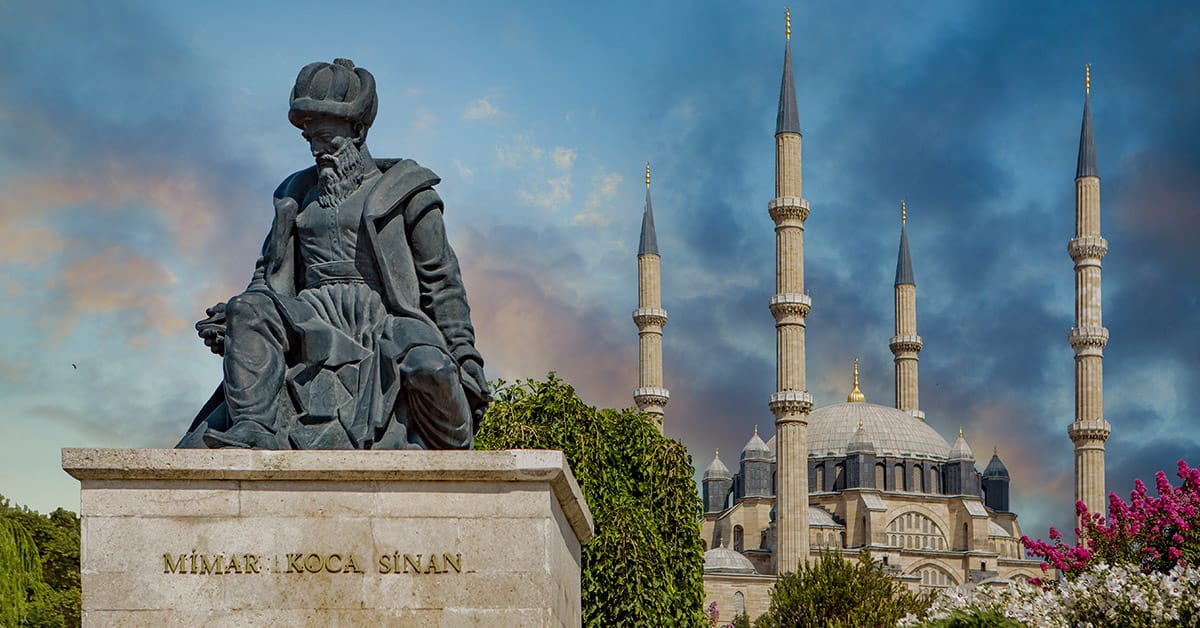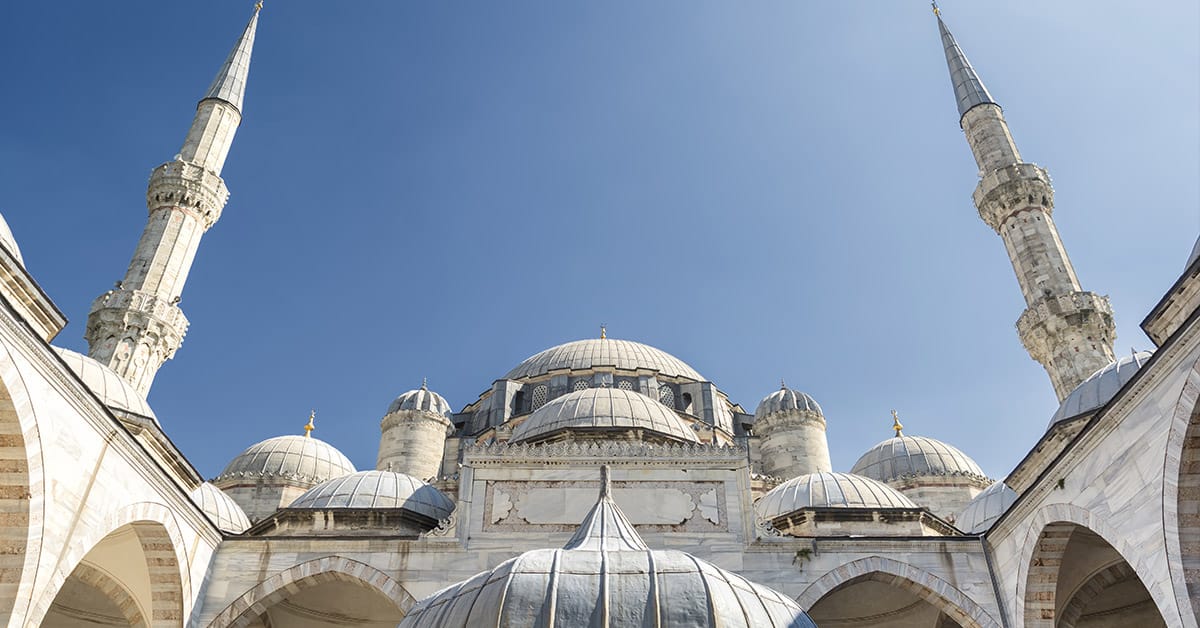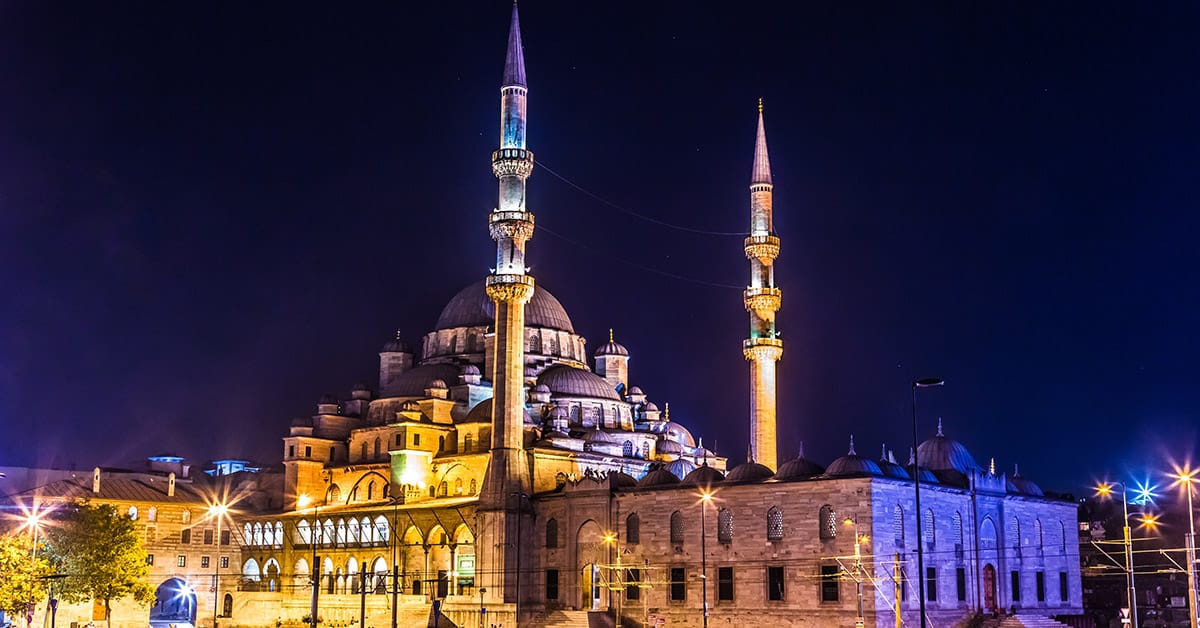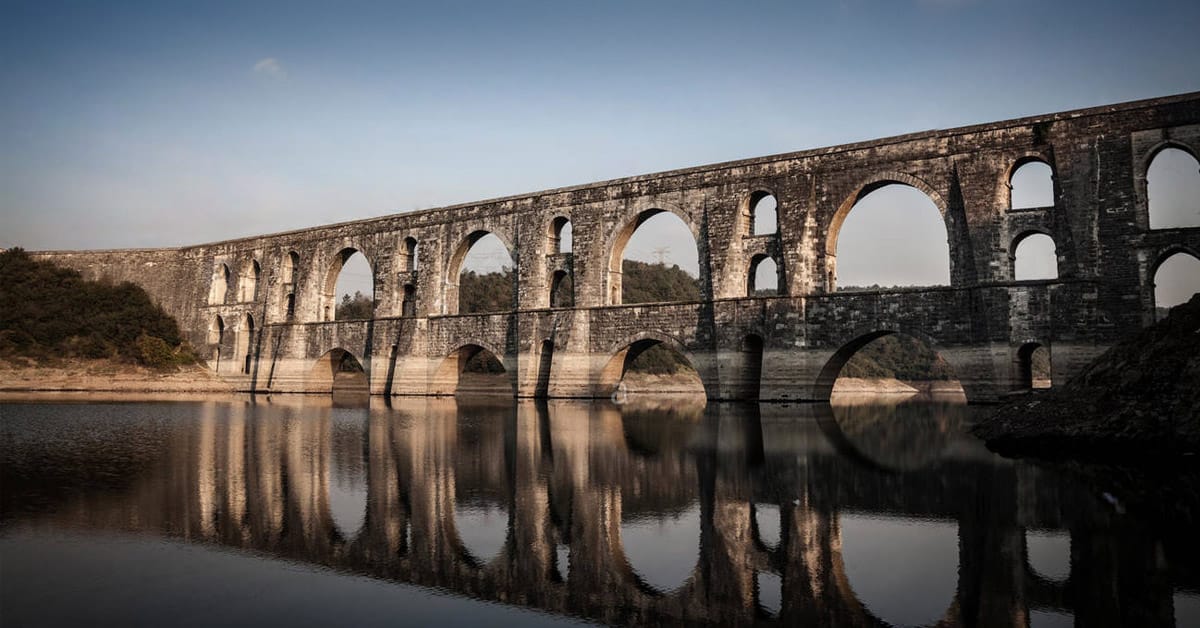 A commemorative statue to the architect, who is often called as Mimar Sinan (“Architect Sinan”) or Mimar Koca Sinan (“Great Architect Sinan”), stands before the building that many scholars consider his finest work, the Selim mosque in Edirne, Turkey. Photo © nexus 7.
A commemorative statue to the architect, who is often called as Mimar Sinan (“Architect Sinan”) or Mimar Koca Sinan (“Great Architect Sinan”), stands before the building that many scholars consider his finest work, the Selim mosque in Edirne, Turkey. Photo © nexus 7.
The great architect-engineer Sinan combined technical mastery and aesthetic vision to create an astounding series of buildings, monuments, and public works at the height of the Ottoman Empire.
Few architects or engineers in history cast a larger shadow that Sinan (1489–1588), whose majestic structures and engineering projects redefined the built environment of Istanbul and other cities of the Ottoman Empire.

The first important mosque project that Sinan undertook after working as a military engineer was the Sehzade Mosque in Istanbul (1543–48), for which he designed a large circular dome supported by half-domes and surrounded by subsidiary domes. Photo © Ozgur Guvenc.
Sinan began his career as an apprentice mason and carpenter, following in the footsteps of his father. Starting at the age of 22 he rose through the ranks of the military of Sultan Suleyman to become a construction officer, designing bridges and fortifications. He augmented his technical expertise with imagination, closely observing the ruins of ancient architecture he encountered in his travels to Baghdad, Damascus, Persia, and Egypt.

Influenced by the Hagia Sophia, the monumental Süleymaniye Mosque in Istanbul (1550-57) was designed by Sinan as part of a vast social complex comprising schools, shops, baths, and a hospital, in addition to serving as a place of worship. Photo © S-F
Promoted to chief architect of the Ottoman Empire at the age of 50, Sinan applied his genius to the design and construction of aqueducts, fountains, schools, poorhouses and bathhouses as well as state and religious buildings. He provided much-needed water to Istanbul by constructing the Kırkçeşme Water Supply System in the 1550s, repairing ancient Roman aqueducts and adding several new ones. He continued to oversee the design of bridges such as the Mehmed Paša Sokolović Bridge, completed 1577, spanning the Drina River in Višegrad, Bosnia and Herzegovina, which still stands today.

The massive yet graceful, 257-meter Maglova Aqueduct, built in 1563 to replace an earlier version destroyed by flood, features tapering buttresses and stacked archways to carry both water and people across the Alibey River.
The apogee of Sinan’s mosque architecture is the Selimiye Mosque (1569–75) in Erdine, Turkey, whose dome equals the diameter and exceeds the height of the Hagia Sophia. The many light apertures that pierce the dome create an effect of expansive lightness, while the actual mass of the dome rests upon a square base stabilized by half-domes. The four corner minarets, rising 83 meters and elegantly detailed, serve at once as buttresses and visual framing devices.
The scope of Sinan’s work is too vast to cover in this blog post, but interested readers may wish to consult the interesting documentary film, “Sinan, a Divine Architect,” directed by Remmelt Lukkien; or the excellent book, “The Age of Sinan: Architectural Culture in the Ottoman Empire,” by Gülru Necipoglu.
The legacy of Sinan is the fusion of durable public works and timeless architectural beauty.







